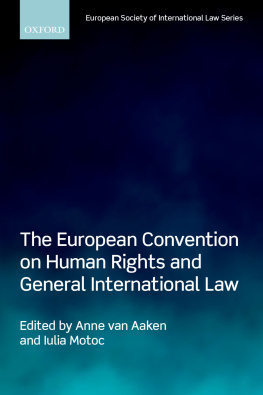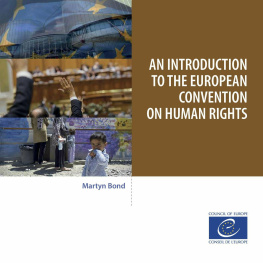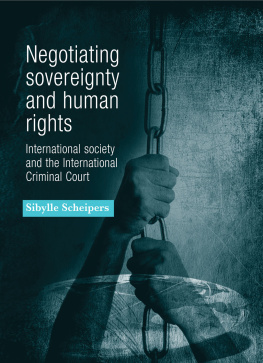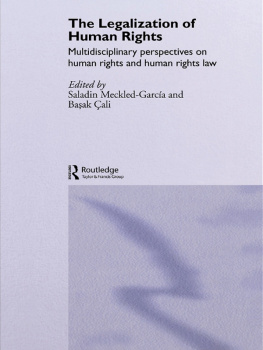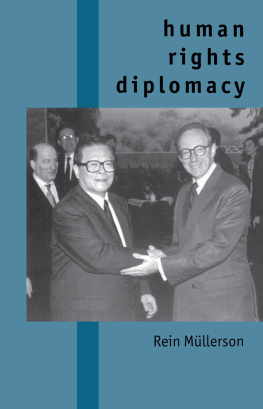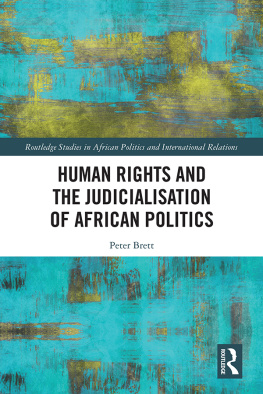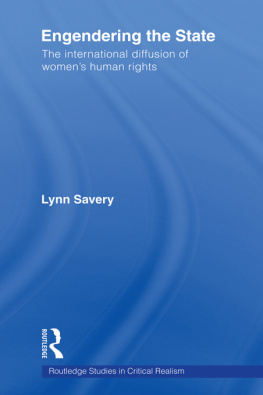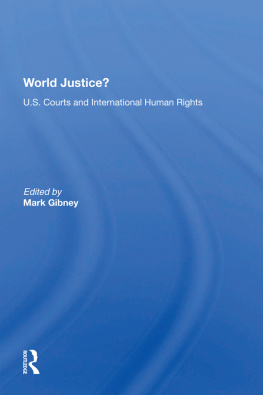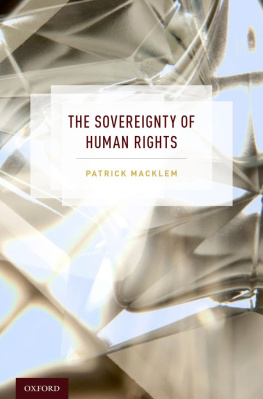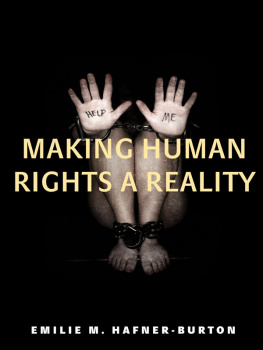EUROPEAN SOCIETY OF INTERNATIONAL LAW SERIES
The European Convention on Human Rights and General International Law
The ESIL Book Series publishes high quality volumes primarily on the themes of ESIL Annual Conferences and ESIL joint events. The volumes include chapters that are based on selected papers presented at ESIL events, revised to fit the focus of the volume, and complemented by additional chapters that address topics that were not fully explored at the events, but that are essential for a full coverage of the theme.

Great Clarendon Street, Oxford, OX2 6DP,
United Kingdom
Oxford University Press is a department of the University of Oxford. It furthers the Universitys objective of excellence in research, scholarship, and education by publishing worldwide. Oxford is a registered trade mark of Oxford University Press in the UK and in certain other countries
Anne van Aaken and Iulia Motoc 2018
The moral rights of the authors have been asserted
First Edition published in 2018
Impression: 1
All rights reserved. No part of this publication may be reproduced, stored in a retrieval system, or transmitted, in any form or by any means, without the prior permission in writing of Oxford University Press, or as expressly permitted by law, by licence or under terms agreed with the appropriate reprographics rights organization. Enquiries concerning reproduction outside the scope of the above should be sent to the Rights Department, Oxford University Press, at the address above
You must not circulate this work in any other form and you must impose this same condition on any acquirer
Crown copyright material is reproduced under Class Licence Number C01P0000148 with the permission of OPSI and the Queens Printer for Scotland
Published in the United States of America by Oxford University Press
198 Madison Avenue, New York, NY 10016, United States of America
British Library Cataloguing in Publication Data
Data available
Library of Congress Control Number: 2018942411
ISBN 9780198830009
eISBN 9780192565549
Links to third party websites are provided by Oxford in good faith and for information only. Oxford disclaims any responsibility for the materials contained in any third party website referenced in this work.
Preface
It is with pleasure that I welcome the appearance of this excellent work, which will make an important contribution to the scholarly literature on the mutual influence and relationship between the European Convention on Human Rights and general international law. The question, or more correctly the many questions, about the Convention and general international law are of inexhaustible interest for those engaged in either, or both, of these disciplines.
The calibre of this volume attests to the very high level of the contributions and discussions that took place during the conference held at the Court in June 2015. It was an extremely fruitful collaboration between our institution and the scholars of the European Society of International Law, whose membership extends well into the judicial ranks of the Court. Opening the proceedings, the then-President of the Court, Dean Spielmann, told the participants that the seminar had all the makings of a landmark event. I would agree. The seminar not only set a precedent for cooperation, but also a standard of intellectual quality that has inspired subsequent joint ventures with the ESIL at Strasbourg. It was natural for me, during my presidency of the Court, to support and encourage these meritorious initiatives. I take this opportunity to record my appreciation for the great efforts in this connection of my colleague, Judge Iulia Motoc, who has been both instrumental and indispensable in developing this productive intellectual partnership.
As the editors recall in their introduction, a deliberately broad approach was taken, encompassing various aspects and dimensions of a subject matter both wide and fundamental. Well-balanced panels of speakers, including judges and academics (not a watertight distinction in international courts), brought their differing perspectives to bear on substantive questionsthe notion of jurisdiction under the Convention, State responsibility, State immunityand on questions of the Courts methodology in interpreting the Convention, with its distinctive reliance on other normative sources. Their debates play out in these pages. To say that these debates are not new is not at all to downplay the interest that they will undoubtedly hold for international lawyers and international human-rights lawyers. The intersection and interactions between these two dynamic disciplines merit the continuing attention of legal commentators. The debate is anything but repetitious, and the discussion is far from closed. The Courts jurisprudential output is considerable and continuous. Since the date of the Strasbourg seminar, some highly significant judgments have been delivered by the Courts Grand Chamber. Happily the authors have been able to take account of some of these recent rulings, for example the Al-Dulimi judgmentgiving effect to economic sanctions decided by the UN Security Council. Further jurisprudential clarifications, innovations, and refinements are no doubt in store, sustaining the debate among legal scholars.
The appearance of this book is timely in that it comes at a moment when the Contracting States have opened a discussion among experts, in the forum of the Council of Europes Steering Committee for Human Rights, about the place of the Convention mechanism in the European and international legal order. The insights and nuances, the justifications, and the criticisms aired at the seminar will be a valuable source of reference in that ongoing process.
Addressing the seminar in its closing session, Judge Antonio Canado Trindade alluded to the place and importance of judicial dialogue as a means for courtsnational and internationalto guard against fragmentation within the international legal system. That message, previously delivered by Dame Rosalyn Higgins in a lecture at Strasbourg in 2009, is well understood in the precincts of the European Court. This is an institution deeply committed to dialogue, be it dialogue within the Convention system or, in the present context, a wider dialogue with international courts, fellow protagonists in the wider international legal system. Shortly after the ESIL seminar, a delegation of the International Court of Justice paid a visit to the European Court of Human Rights for discussions with their counterparts at Strasbourg. Complementing the well-known phenomenon of the dialogue of judgments among international courts, this dialogue among international judges deserves to become a regular practice.
Guido Raimondi
President of the European Court of Human Rights
Strasbourg
Al-Dulimi and Montana Management Inc v Switzerland [GC] App no 5809/ 08 (ECtHR, 2016).
As foreseen in Chapter V of the report of the Steering Committee for Human Rights, The Longer-term Future of the System of the European Convention on Human Rights, 2015.
Contents
Anne van Aaken, Iulia Motoc, and Johann Justus Vasel
Ineta Ziemele
Angelika Nuberger
Anja Seibert-Fohr
Geir Ulfstein
Marko Milanovic
Il Karaka and Hasan Bakrc
Ganna Yudkivska
Samantha Besson
James Crawford and Amelia Keene
Iulia Motoc and Johann Justus Vasel

